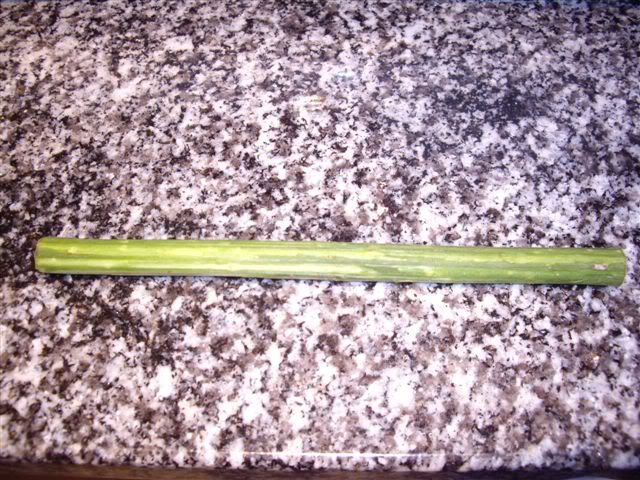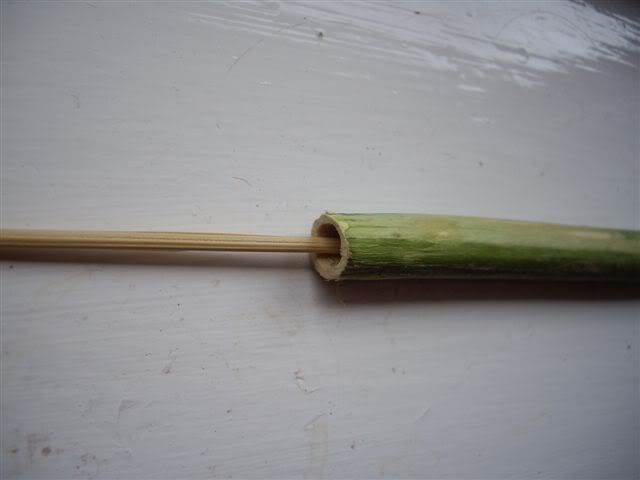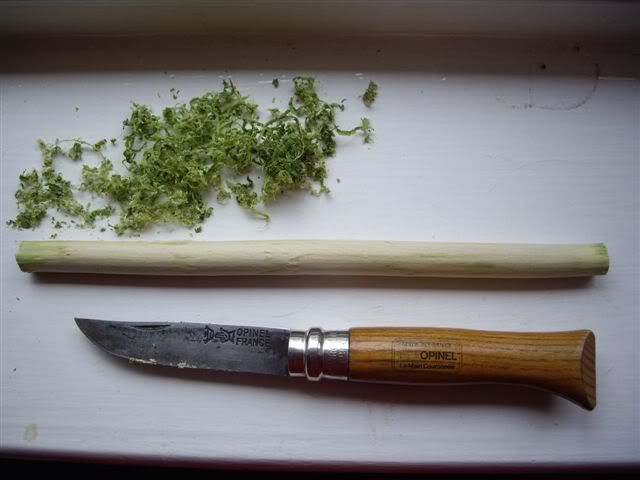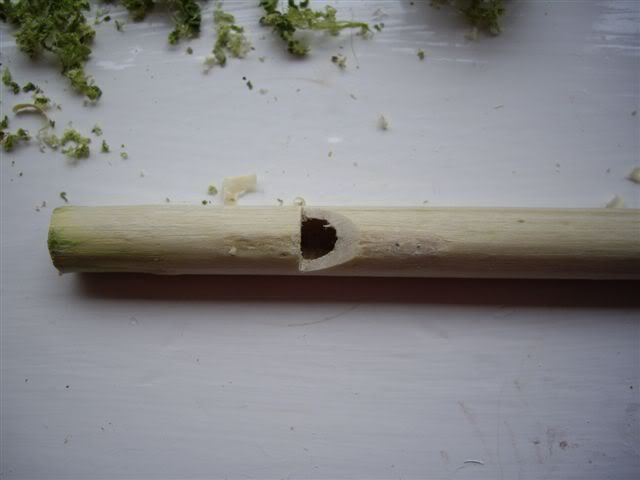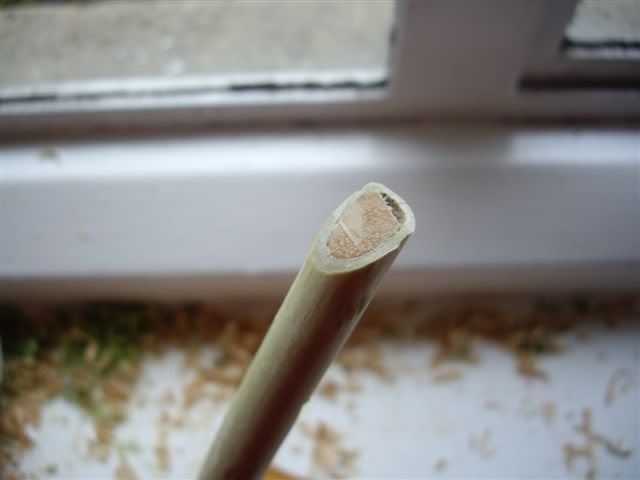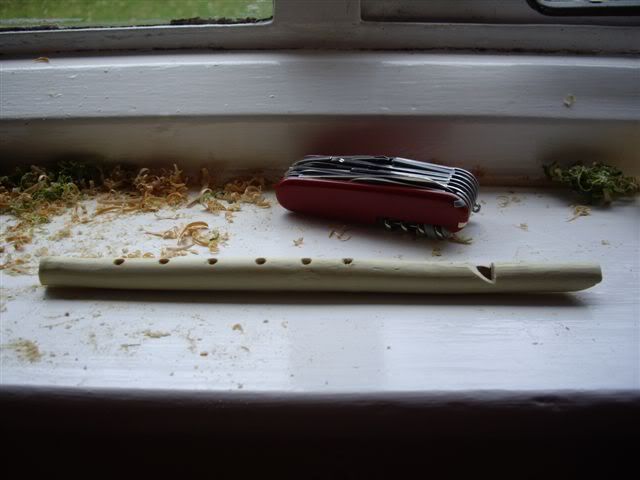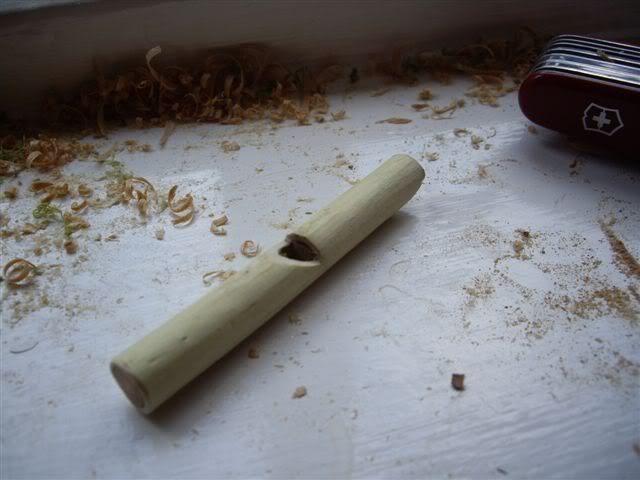I have been working on making whistles, and have made a native american flute with a fettish, but when I started making flutes using a simple fipple, I had the same problem: I could not get them to work if the end was open, but they tooted just fine when it was closed.
I could not figure it out, until I started looking at the flow of air and considering the principle that makes a whistle work: Bernouli's principle states that fluid/air moving at a high velocity has lower pressure (and the converse is true of lower velocity air). When a whistle with an end works, the air travels inside the whistle and comes out the same hole it enters. The lower velocity air (that circulates around the whistle) interacts with the higher velocity air (coming out of the fipple) and causes the air to vibrate....after playing a pennywhistle, I knew that sound (and hence, vibration) could be achieved without the end on the whistle, but the dilemma was how to do it?
I looked at the penny whistle...notice that the 45 degree cut on a traditional pennywhistle does not go completely across the top of the whistle. It has sides. This gives more resistance to the air...and the air is directed (at a high velocity) into the whistle where it interacts (I checked out diagrams of this on the internet), with the lower velocity air traveling up the whistle from the outside. The interaction of the two different velocities causes the air to vibrate and make sound. Without the sides on either side of the slit, too much of the air escapes and the velocity of the incoming air interacting with the air coming up the whistle is reduced...sooooooo no sound is produced.
In short, do not make your 45 degree cut all across the top of the whistle. Instead, drill a hole where it is going to be and chisel out the slit with sides. The make your fipple as usual...being patient until a nice clear tone is produced. Then drill your holes for the different tones you want...and there it is a wooden flute! Good luck! Have fun.

